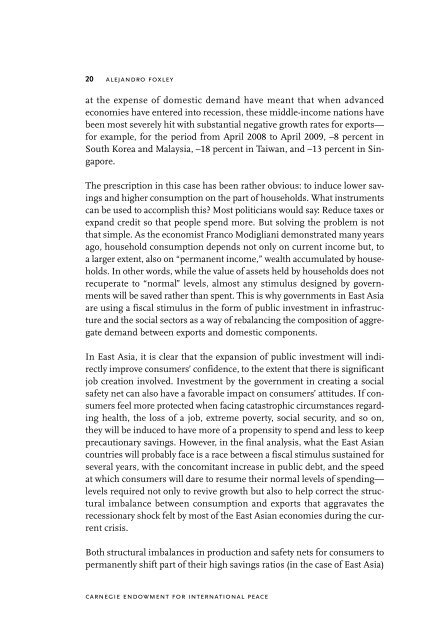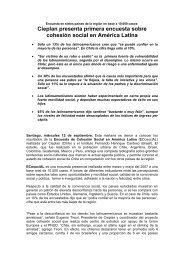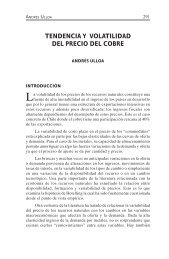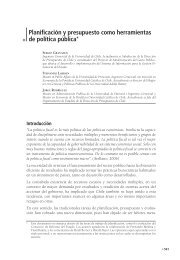Recovery: The Global Financial Crisis and Middle-Income Countries
Recovery: The Global Financial Crisis and Middle-Income Countries
Recovery: The Global Financial Crisis and Middle-Income Countries
Create successful ePaper yourself
Turn your PDF publications into a flip-book with our unique Google optimized e-Paper software.
20 alej<strong>and</strong>ro foxleyat the expense of domestic dem<strong>and</strong> have meant that when advancedeconomies have entered into recession, these middle- income nations havebeen most severely hit with substantial negative growth rates for exports—for example, for the period from April 2008 to April 2009, –8 percent inSouth Korea <strong>and</strong> Malaysia, –18 percent in Taiwan, <strong>and</strong> –13 percent in Singapore.<strong>The</strong> prescription in this case has been rather obvious: to induce lower savings<strong>and</strong> higher consumption on the part of households. What instrumentscan be used to accomplish this? Most politicians would say: Reduce taxes orexp<strong>and</strong> credit so that people spend more. But solving the problem is notthat simple. As the economist Franco Modigliani demonstrated many yearsago, household consumption depends not only on current income but, toa larger extent, also on “permanent income,” wealth accumulated by households.In other words, while the value of assets held by households does notrecuperate to “normal” levels, almost any stimulus designed by governmentswill be saved rather than spent. This is why governments in East Asiaare using a fiscal stimulus in the form of public investment in infrastructure<strong>and</strong> the social sectors as a way of rebalancing the composition of aggregatedem<strong>and</strong> between exports <strong>and</strong> domestic components.In East Asia, it is clear that the expansion of public investment will indirectlyimprove consumers’ confidence, to the extent that there is significantjob creation involved. Investment by the government in creating a socialsafety net can also have a favorable impact on consumers’ attitudes. If consumersfeel more protected when facing catastrophic circumstances regardinghealth, the loss of a job, extreme poverty, social security, <strong>and</strong> so on,they will be induced to have more of a propensity to spend <strong>and</strong> less to keepprecautionary savings. However, in the final analysis, what the East Asiancountries will probably face is a race between a fiscal stimulus sustained forseveral years, with the concomitant increase in public debt, <strong>and</strong> the speedat which consumers will dare to resume their normal levels of spending—levels required not only to revive growth but also to help correct the structuralimbalance between consumption <strong>and</strong> exports that aggravates therecessionary shock felt by most of the East Asian economies during the currentcrisis.Both structural imbalances in production <strong>and</strong> safety nets for consumers topermanently shift part of their high savings ratios (in the case of East Asia)carnegie endowment for international peace












